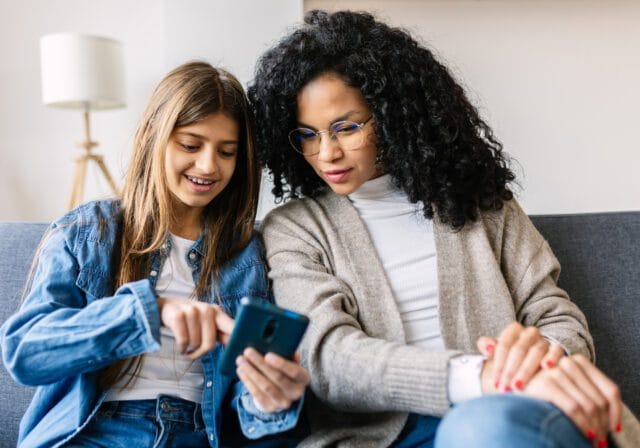In this guide, we’ll cover what phone etiquette means, share 30 actionable tips, highlight common mistakes to avoid, and explain why mindful, respectful digital etiquette is essential today.
What is phone etiquette?
Phone etiquette is the practice of using your device respectfully and considerately, ensuring you don’t disrupt others or come across as rude. It covers everything from silencing your phone in meetings, to speaking quietly in public, to respecting cultural differences around mobile use.
Good cell phone manners signal professionalism, courtesy, and awareness. Bad habits - like texting at the dinner table or using speakerphone in a café - do the opposite.
4 reasons why good phone manners matter today
- Respect and perception: Ignoring in-person conversations to check your phone sends a negative message.
- Professionalism: In the workplace, sloppy phone use can undermine credibility.
- Safety: Texting while driving isn’t just rude - it’s dangerous and illegal in many places.
- Global expectations: What’s acceptable in one culture may be inappropriate in another. For example, in Japan, phone calls on public transit are considered rude, especially when seated near priority seats, which are reserved for those who may need them more. In contrast, in the US, quick phone calls on transit are more common and generally socially accepted.
30 universal phone etiquette habits everyone should practice
Now that we’ve covered what phone etiquette is and why it matters, let’s get practical. The following tips are simple, everyday habits that can make a big difference in how you're perceived – at work, in social settings, and in public spaces. Whether you're a frequent traveler, a busy professional, or just trying to be more mindful, these phone manners apply to nearly every situation.
- Keep your phone on silent or vibrate in shared spaces.
- Choose discreet ringtones instead of loud, disruptive ones.
- Avoid speakerphone in public unless absolutely necessary.
- Speak clearly but softly - no need to broadcast your conversation.
- Respect others’ time by keeping personal calls brief in group settings.
- Never interrupt a conversation to check your phone.
- Apologize and silence your phone immediately if it rings in a quiet place.
- Always identify yourself at the start of a call.
- Let non-urgent calls go to voicemail when you’re engaged elsewhere.
- Avoid confidential or sensitive conversations in public areas.
Cell phone etiquette tips to follow in social settings
Phones can be one of the biggest sources of distraction in relationships and friendships. Here’s how to use yours more respectfully:
- Put your phone away during meals or dates - show full attention.
- Step aside to take calls instead of staying at the table.
- Pause notifications or use “Do Not Disturb” during gatherings.
- Don’t overshare on social media in the moment.
- Ask permission before taking or posting photos of others.
Mistake example: Checking Instagram at a friend’s birthday made the group feel ignored. Keep your phone in your pocket to avoid temptation.
Professional & workplace phone etiquette rules to follow
Phones are useful at work, but poor habits can damage your reputation.
- Silence your phone in meetings and presentations.
- Avoid personal calls during working hours.
- Use professional greetings and tone in business calls.
- Don’t check texts mid-conversation with colleagues or clients.
- Step out discreetly if you must answer an urgent call.
- Avoid browsing social media in professional settings.
Mistake example: During a client pitch, a loud ringtone broke concentration and left a poor impression.
Texting, calling & notifications: polite practices
- Consider time zones and schedules before calling.
- Keep calls and voice messages short and purposeful, or avoid altogether, depending on the situation. (Generational differences and the recipient’s preference play a role in whether to call, text, leave a message, or just hang up).
- Use emojis carefully in professional communication - tone can be misread.
- Respond promptly, or at least acknowledge receipt of messages.
Teaching kids digital etiquette
If your kids have a cell phone, teaching them mobile manners isn’t just about limiting screen time - it’s about showing them how to use technology respectfully. By setting clear expectations early, parents can help kids understand when phone use is appropriate, how to respect others’ space, and why balance matters in today’s digital world.
- Encourage kids to keep device volume low in public.
- Create “phone-free” family times, like during meals.
- Teach them not to interrupt adults while they’re on the phone.
- Model respectful phone behavior yourself - kids mimic what they see.
- Remind them to ask permission before taking photos or videos of others.
4 FAQs about phone etiquette
- Is phone use in theaters always off-limits?
Yes. Even screen glow is disruptive - keep phones silent and put away.
- How should I handle an important call during a conversation?
Politely excuse yourself and step aside. Always acknowledge the person first.
- Should I have separate phones for work and personal life?
It’s not required, but it can help balance boundaries and avoid distractions.
- Why is cell phone etiquette important?
It protects relationships, maintains professionalism, and shows respect.
Staying connected starts with respect
Cell phone etiquette isn’t about strict rules - it’s about showing respect, being mindful, and staying present. Whether you’re at work, with family, or in public, these 30 tips will help you communicate better and maintain stronger connections.
You may also be interested in:
- What Age Should a Kid Get a Phone?
- How to Know if Someone Blocked You
- Spam Text Messages
- What Is The Average Phone Bill Per Month?
Sources:
- https://emilypost.com/advice/top-10-cell-phone-manners
- https://www.mightycall.com/blog/cell-phone-etiquette/
- https://www.rd.com/list/cell-phone-etiquette-tips/
- https://www.indeed.com/career-advice/career-development/phone-etiquette
- https://blog.hubspot.com/service/phone-etiquette
- https://www.efani.com/blog/using-phone-in-public-etiquette





